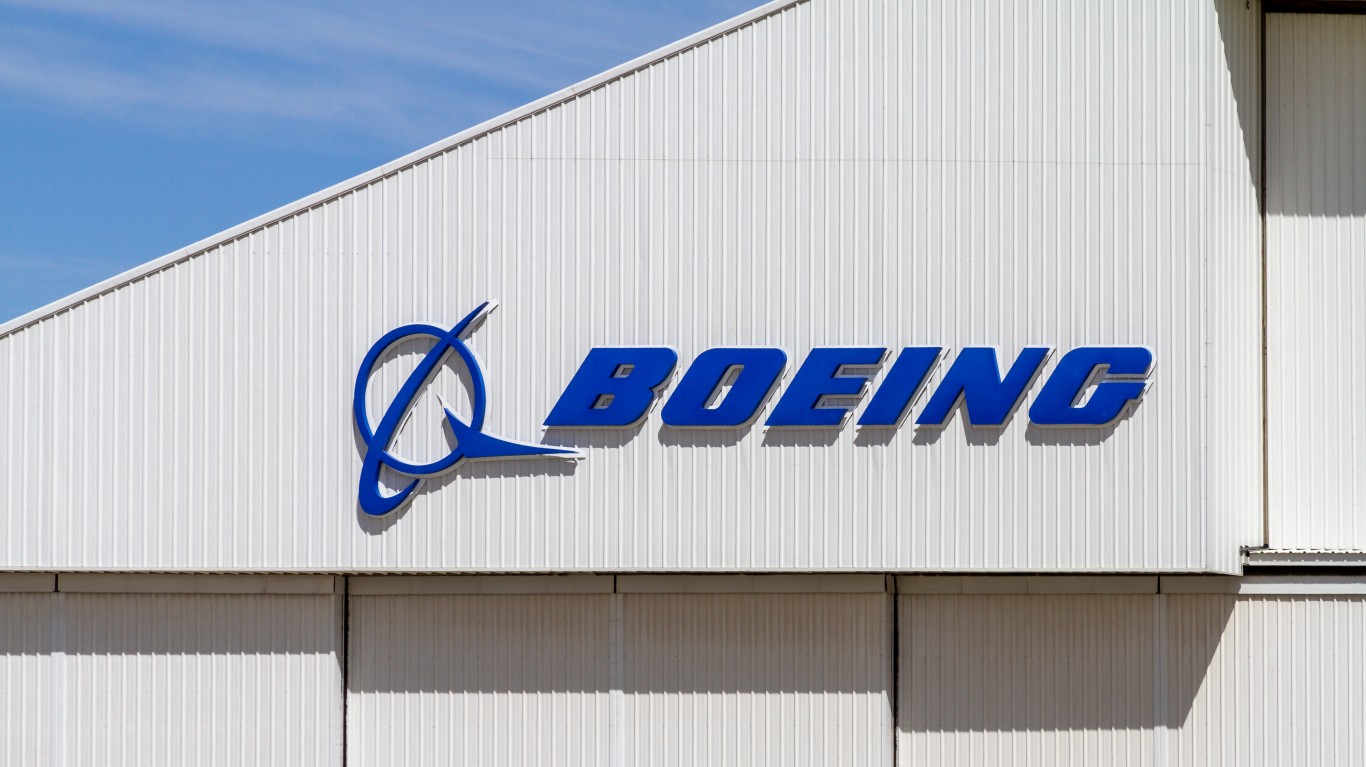
Boeing Co. (NYSE: BA) reported second-quarter 2020 results before markets opened Wednesday. The aerospace company posted an adjusted diluted per-share loss of $4.79 on revenues of $11.8 billion. In the same period a year ago, the company reported a per-share loss of $5.82 on $15.75 billion in revenues. Second-quarter results compare to consensus estimates for a loss of $2.54 per share on revenues of $13.16 billion.
The company burned through $5.3 billion in cash during the second quarter, and free cash flow came in at a negative $5.6 billion. It’s no surprise that the grounding of the 737 Max, fewer deliveries overall and lower services volume due to the COVID-19 pandemic decimated results. Boeing delivered just 20 commercial jets in the second quarter.
In the company’s commercial airplane division, revenues were down by 65% year over year and the loss from operations totaled $2.8 billion. Defense division revenues were flat and operating earnings totaled $600 million, down 38% compared with last year. The global services division posted a loss from operations of $672 million, down from a profit of $687 million a year ago.
On a GAAP basis, Boeing’s loss per share totaled $4.20. The adjusted loss per share was due primarily to pension cost adjustments and expenses totaling $0.75 shares, partially offset by a benefit of $0.16 on deferred tax payments on the adjustments.
In order to bring demand for Boeing’s commercial jets into line with the realities of the COVID-19 outbreak, the company is reducing production of its 787 Dreamliner from 10 per month to six per month next year, one fewer than announced in April. Combined production of the 777/777X twin-aisle passenger jet will be cut from a previously stated rate of three per month to two per month in 2021, and first delivery of the 777X is now targeted for 2022.
In May, Boeing said it would ramp 737 Max production to 31 per month by next year, well short of the 57 per month rate the company had announced prior to the plane’s grounding.
The rate for 747 production will remain at six per year, and 767 production will remain at three per month. The 767 is the model that is reconfigured for Boeing’s KC-46 refueling tanker.
In a separate update for employees, Boeing said that the lower rate for its 787 means that the company will “need to evaluate the most efficient way to produce the 787, including studying the feasibility of consolidating production in one location.” The 787 is currently built at plants in Washington and in South Carolina.
CEO David Calhoun also noted in the update that the company would need “to further assess the size of our workforce” as Boeing and the aerospace industry continue to be hammered by the COVID-19 pandemic. Calhoun did not give a total for additional layoffs, but he made it clear that more job cuts were highly likely. Boeing announced 16,000 job cuts in April.
Boeing shares traded up about 1.2% in Wednesday’s premarket, at $172.95 in a 52-week range of $89.00 to $391.00. The consensus price target on the stock is $177.86.
Take Charge of Your Retirement In Just A Few Minutes (Sponsor)
Retirement planning doesn’t have to feel overwhelming. The key is finding expert guidance—and SmartAsset’s simple quiz makes it easier than ever for you to connect with a vetted financial advisor.
Here’s how it works:
- Answer a Few Simple Questions. Tell us a bit about your goals and preferences—it only takes a few minutes!
- Get Matched with Vetted Advisors Our smart tool matches you with up to three pre-screened, vetted advisors who serve your area and are held to a fiduciary standard to act in your best interests. Click here to begin
- Choose Your Fit Review their profiles, schedule an introductory call (or meet in person), and select the advisor who feel is right for you.
Why wait? Start building the retirement you’ve always dreamed of. Click here to get started today!
Thank you for reading! Have some feedback for us?
Contact the 24/7 Wall St. editorial team.




